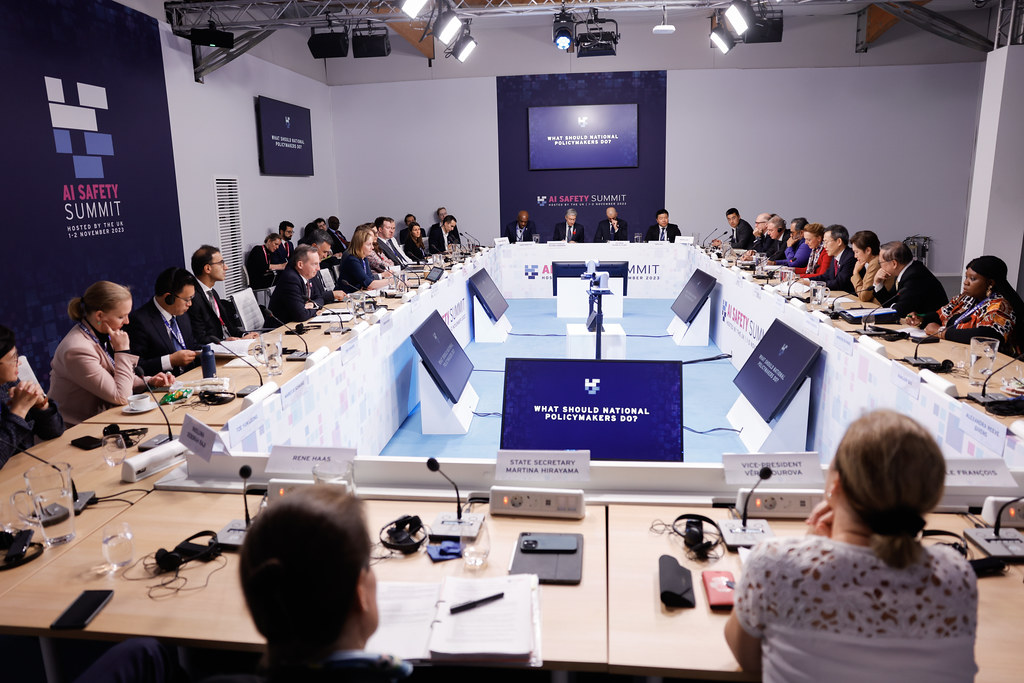Iran’s Photographs of Navy Sailors: A War Crime (Or “Just” An Outrage?)
There’s an interesting IHL angle to Iran’s seizure and subsequent release of ten American sailors in the Persian Gulf: As several observers have already noted, publishing photographs and videos of the sailors may implicate Article 13 of the Third Geneva Convention, which provides that “prisoners of war must at all times be protected … against insults and public curiosity.”
Published by The Lawfare Institute
in Cooperation With

There’s an interesting IHL angle to Iran’s seizure and subsequent release of ten American sailors in the Persian Gulf: As several observers have already noted, publishing photographs and videos of the sailors may implicate Article 13 of the Third Geneva Convention, which provides that “prisoners of war must at all times be protected … against insults and public curiosity.”
The requirement of protection against “public curiosity” is widely understood to prohibit publishing precisely the kinds of photos and videos that Iran has released here. The ICRC takes the position that it is unlawful to disseminate any photographs in which individual POWs can be identified. And even if one takes the narrower view that prohibited photographs must reflect some further “intention to humiliate,” Iran’s blatantly propagandistic intent in releasing these images surely satisfies that more stringent standard. In the past, ICRC officials have denounced similarly staged POW videos.
State practice accords with this reading of Article 13. The Department of Defense’s Law of War Manual bars “displaying detainees publicly with the purpose of exposing them to ridicule and humiliation.” “[I]n order to protect detainees against public curiosity,” DOD policy also prophylactically “prohibit[s] the taking of photographs of detainees except for authorized purposes” like facility administration and intelligence. The military manuals of other countries, including the United Kingdom, the Netherlands, and Peru, also specifically prohibit dissemination of images like those at issue here.
It bears noting that the photographs are not the only aspect of Iran’s conduct that potentially violates IHL: The treatment recorded by the Iranian cameras may independently breach Iran’s obligations under the Third Geneva Convention. Article 14 provides that “[p]risoners of war are entitled in all circumstances to respect for their persons and their honour.” Some of the conduct depicted plausibly violates that obligation; for example, forcing the female sailor to wear a headscarf not required by her own religious beliefs (assuming that is what happened).
There’s a potential catch, however—one hinted at by Hudson’s Michael Pregent, who commented that these “sailors weren’t necessarily prisoners of war.” The prohibitions in Articles 13 and 14 apply during an “armed conflict” between two or more contracting parties. And the United States and Iran are not at war—at least as a matter of common usage (more on that later).
It may seem bizarre for inhumane treatment to escape legal sanction because the perpetrator was at peace with the victim. But this isn’t as strange as it sounds. IHL is “lex specialis, … applicable in armed conflict [and] designed to regulate the conduct of hostilities.” In peacetime, IHL is switched off while other bodies of law—international human rights law and domestic law, among others—protect individual rights, including those of foreign soldiers. To illustrate, imagine that a foreign police force were to arrest a U.S. soldier for some local crime and then release humiliating photographs of the soldier in custody. In that case, we wouldn’t look to the Third Geneva Convention, but rather to other relevant bodies of law. For example, the host country’s domestic law specifying the rights of criminal defendants, a bilateral status-of-forces agreement between the host country and the United States, or Articles 7 (ban on “degrading treatment”) and 10(1) (“respect for the inherent dignity” of detainees) of the International Covenant on Civil and Political Rights.
That said, the coercive military-on-military encounter that took place here presents a much stronger case for application of the POW convention. Even though, as a matter of ordinary usage, few would describe the United States and Iran as having been “at war” during this encounter, there’s a solid argument that it nonetheless fell within the term of art “armed conflict” in Common Article 2. Jean Pictet’s 1960 Commentary, “widely recognized as a respected authority on interpretation of the Geneva Conventions,” explains that:
Any difference arising between two States and leading to the intervention of members of the armed forces is an armed conflict within the meaning of Article 2, even if one of the Parties denies the existence of a state of war. It makes no difference how long the conflict lasts, how much slaughter takes place, or how numerous are the participating forces; it suffices for the armed forces of one Power to have captured adversaries falling within the scope of Article 4. Even if there has been no fighting, the fact that persons covered by the Convention are detained is sufficient for its application.
Similarly, the International Criminal Tribunal for Yugoslavia held in the Tadić case that “an armed conflict” triggering IHL “exists whenever there is a resort to armed force between States.” (Thanks to Ben Schrier for pointing this out.) Capturing American sailors at gunpoint and forcing them to return to an Iranian base looks a lot like “a resort to armed force.” Friendly persuasion this was not.
Ultimately, the existence or nonexistence of an “armed conflict” for purposes of the Geneva Conventions is more interesting as an intellectual exercise than for any practical significance. Any consequences Iran suffers for this behavior would stem from U.S. retaliation (which appears unlikely) or international opprobrium, and neither of those turns on this technicality. Rather, what matters for those purposes is that parading captured sailors as propaganda trophies is inhumane and outrageous. Whether in war or peace.





